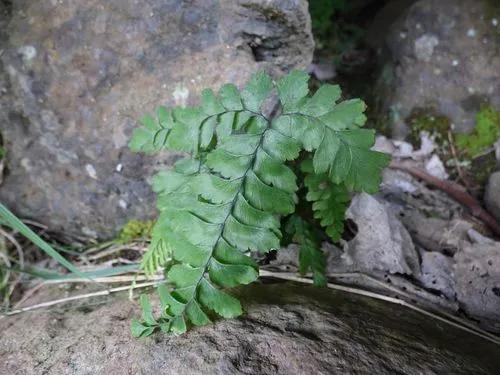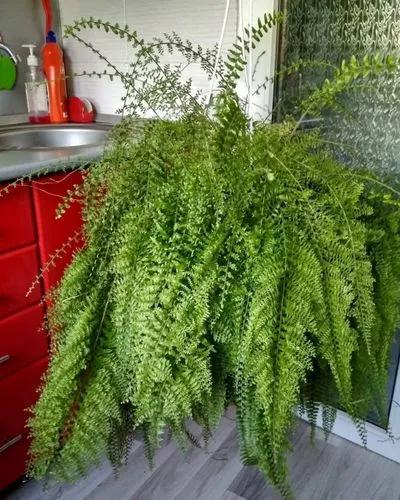When you hear the word fern an image of this particular plant probably never comes to mind. It makes Bird-s Nest Fern even more interesting for plant-lovers.
Bird's Nest Fern Care
Asplenium nidus



Rainforest is a home for Bird's Nest Fern. It has come to us from tropical regions of Asia, Africa, and Australia. It also grows in Hawaii and India. Nowadays it has become an accustomed decoration for homes all over the world.
The center of the plant looks like a bird's nest, hence the name. Its leaves are long, green, and slightly crinkled.
Bird's Nest Fern is not toxic for cats and dogs. However, it is better to keep the plant away from your pets.
How to Care for the Plant

Water

Avoid sogginess at all costs. However, make sure that the soil is moist enough. Do not put water directly in the center, among leaves, because it can encourage rotting. Water the soil on the sides instead.

Pruning

When you notice some leaves turn brown or yellow, cut them from the base.

Fertilizer

Throughout the growing season (from the middle of the spring until the early fall), use liquid fertilizer once a month. Remember not to pour it directly into the rosette.

Sunlight

Needs bright, indirect sunlight.

Soil

Use peat-based soil. Also, don't forget about good drainage.

Propagation

A propagation process may look long and complicated. Bird's Nest Fern propagates via spores. They look like small brown spots on the reversible side of the fronds. Collect them when they are fuzzy and plump. Then keep them in a paper bag for several days. After that, take a container with sphagnum moss in a water dish and put spores on top of it. Cover it with plastic wrap and put it in a warm place. Avoid direct light. Mist it regularly, and in a few weeks or a month, you will see some development. It will become a proper-looking fern in a year or so. But seriously, go to the store and pick an already grown one.

Temperature

Bird's Nest Fern prefers a warm environment. The temperature range 68-96 ºF (20-30 ºC) is perfect for it. Try not to expose it to sudden temperature drops, cold drafts, and low humidity.

Container

Every other year, repot the plant and replace the old pot with a slightly bigger one. A container should have large drainage holes. Avoid plastic containers and pay attention to clay ones.

Fun fact

The amount of sun affects the state of the leaves — the more a leaf is exposed to the sun, the more crinkled it becomes.

Additional

This plant needs indirect bright light. Early morning sun is a great light source, so east windows are the best possible placement.

Popularity

43,765 people already have this plant 4,442 people have added this plant to their wishlists
Discover more plants with the list below
Related articles






